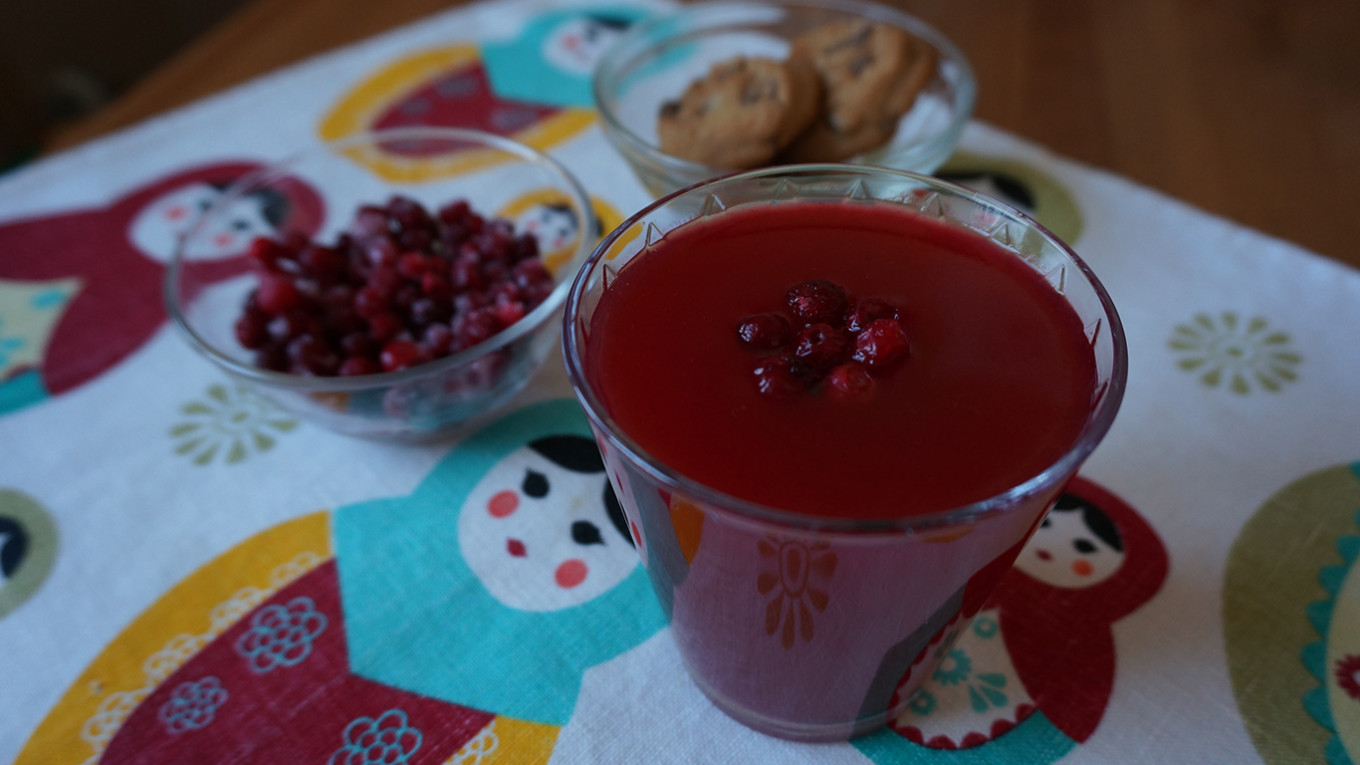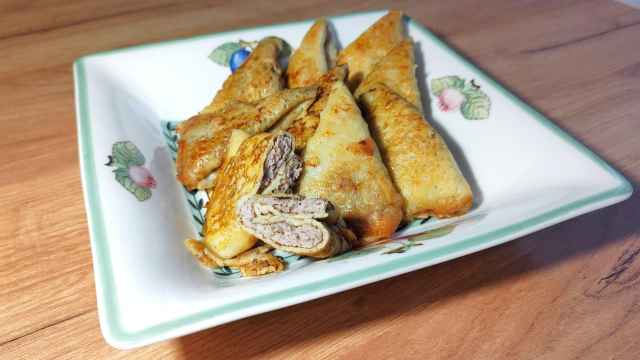Behind many a successful food writer stands an inspirational grandparent. This is certainly true of Anna Kharzeeva, author of “The Soviet Diet Cookbook: Exploring Life, Culture and History — One Recipe at a Time.” With the help of her grandmother, Yelena Moiseyevna, Kharzeeva, a thirty-something Muscovite, set out to explore the world of Soviet-era cuisine by cooking from that period’s culinary Bible: “The Book of Tasty and Healthy Cuisine.”
The significance of The Book (its universal affectionate moniker) on at least three generations cannot be underestimated. Conceived by Stalin’s urbane Commissar for Foreign Trade, Anastas Mikoyan, The Book was first published in 1939, but World War II interrupted additional print runs. The post-war 1952 edition both expanded the book’s scope and increased its popularity. This edition contains a staggering 1,400 recipes spanning over 400 pages, with stylized illustration that today immediately evoke the idealism of the post-war era. It has sold over eight million copies and has never been out of print. Russians cherish their tattered copies and hand them down from generation to generation.
As Kharzeeva discovers, The Book’s remit goes beyond culinary tuition and far into the realm of propaganda, offering an aspirational portrait of an idealized Soviet life. It also offers information about nutrition and instruction on etiquette and the proper way to lay a table for a dinner party. For much of Soviet society, living in the cramped confines of a workers’ dormitory or communal apartment, the illustrations of abundant fish, meat, fruits, and crisp white tablecloths and the all-important china “service” must have seemed as fantastical as 19th century Russian literature’s tales of epicurean banquets and spacious living quarters.
The Book’s recipes showcase the technological innovations introduced to the country’s cooks after the Revolution of 1917. With refrigeration, communal housing, workplace canteens, and food preservation such as canning, the Bolsheviks hoped to bring the single-family dwelling and home cooking to the brink of extinction, but — happily or not — home cooking remained a necessary aspect of everyday life.
The Soviet economy provided precious little of the enthusiastic abundance described in The Book: women were relegated to scouring shops and standing in long lines to secure basic staples, and only good connections or a plum job — which Yelena Moiseyevna refers to as “getting close to a sausage” — ensured luxuries such as salami, imported cheese, or fresh fruit.
Today, The Book provides invaluable insights for social and culinary historians. Cooking from it is another matter. My own tattered copy lives on my desk, not in my kitchen. Many of my assignments as a food writer have sent me to The Book for context, but trying to follow its instructions in the kitchen can be frustrating. The most frequent direction in The Book is “open a tin of…” and it often lists ingredients in what I think of as food groups rather than their constituent parts, such as “Meat and Pasta.” But with Yelena Moiseyevna as her guide, Kharzeeva bravely embarked on her six-year exploration of The Book, which was first serialized by “Russia Beyond the Headlines” in article format.
Kharzeeva’s project was made more interesting by serendipitous timing. In 2014, in response to Western sanctions over the invasion of Crimea, Russia banned the import of foreign foods from the European Union, United States, Canada, Australia, and Japan. While these sanctions did not result in the privations experienced by Kharzeeva’s parents and grandparents, they did considerably narrow the scope of ingredients available in Russia and gave Kharzeeva keener insight into the challenges faced by The Book’s target audience.
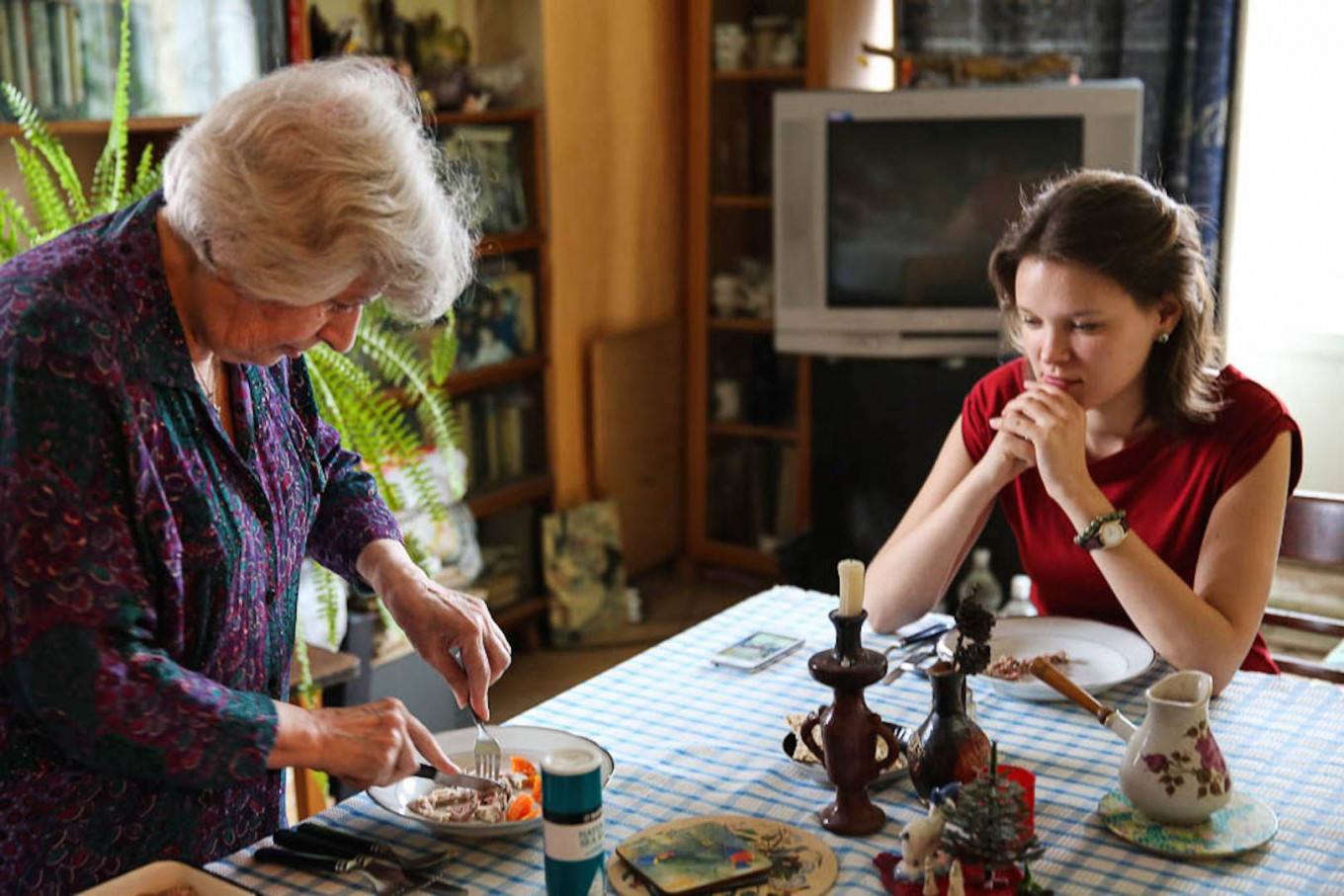
Cooking one’s way through an iconic culinary tome and writing about it is by no means original idea, but Anna Kharzeeva’s engaging narrative voice breathes new life into the format first popularized by Julie Powell of “Julie and Julia” fame. “The Soviet Diet” includes 80 classic recipes from The Book; Kharzeeva explores the origins of each recipe and through often humorous exchanges with her grandmother, she discovers how these recipes were interpreted and adapted during the Soviet era. In an early chapter, Kharzeeva attempts “soured cabbage,” which she notes, “… it is made throughout Russia mostly by older women who share their recipes as though they were the most exciting story ever.” Yelena Moiseyevna wisely tries to steer Kharzeeva away from The Book’s version of this recipe, but to no avail. Yelena Moiseyevna can hardly conceal her delight when The Book’s recipe fails. We are the winners in this episode, coming away with a copy of Granny’s signature method.
Kharzeeva is the nexus of different points of view, which serves her narrative well. Having come of age during the salad days of the Russian Federation when foreign foods, ingredients, and methods were widely available in major metropolitan areas such as Moscow, Kharzeeva’s tastes are more Melissa Clark than Anastas Mikoyan.
Her own distaste for “Soviet kindergarten food” such as kissel will resonate with generations of Russians, as will Kharzeeva’s delightful realization that Granny’s “mushroom tea” is actually kombucha. Kharzeeva makes no secret of the fact that she finds many of The Book’s recipes far from her own ideas of “healthy” or “tasty.” But Yelena Moiseyevna is a masterful Virgil to Kharzeeva’s Dante, explaining nuances and reminiscing about a time when sourcing food was a daily challenge and choice was very limited. Yelena Moiseyevna doesn’t agree with everything in The Book, but like all brilliant cooks, she used its recipes as templates on which she based her own version of Jewish and Russian classic dishes.
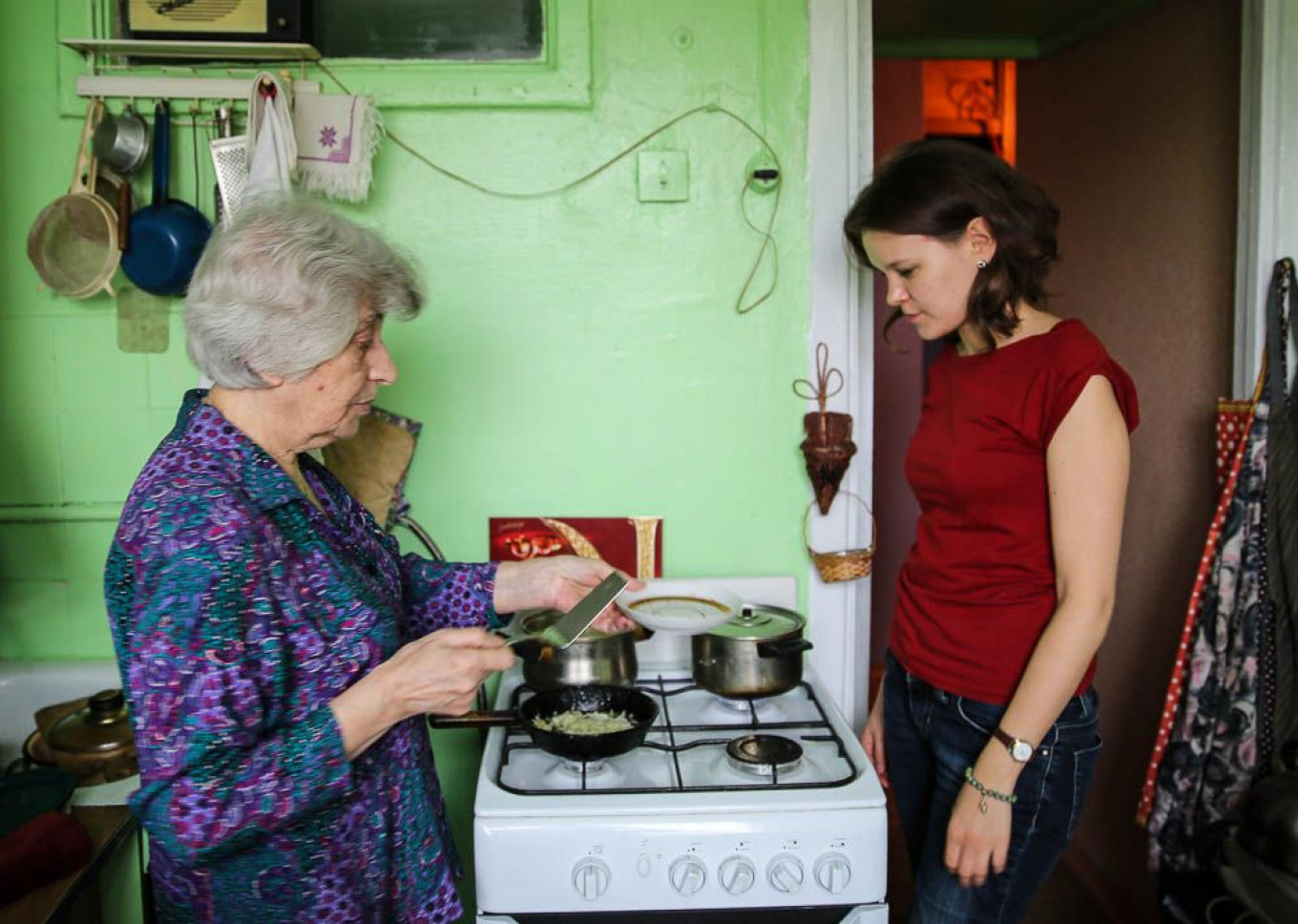
Kharzeeva’s Australian husband and his family provide the total outsider’s point of view, embracing many of her experiments with surprising enthusiasm. When the couple move to Tbilisi, other important pieces of the mosaic fall into place: those of the cuisines of the former Soviet Republics, which have gifted Russia dishes such as plov, chachkokhbili, and bobazh.
At the heart of this engaging debut cookbook is that age-old and universal tradition of a grandmother passing on her recipes and stories to a granddaughter with generous dollops of love and wisdom. Kharzeeva expertly weaves her exploration of a bygone culinary era with her great-grandmother’s and grandmother’s stories of life before and after the revolution. The resulting chapters offer heartwarming tales of food, family, and timeless lessons on how to develop the resilience to withstand everything from privation to pandemic.
Kissel: The Juice That Pretends to be a Meal

Every Russian child has a few strong dislikes — for some, it's the Russian language teacher; for others, it's having to wear tights under pants in the winter. For me, it is kissel.
Kissel is like berry juice with starch in it. It was the gooey, disgusting, omnipresent nightmare of my childhood. It was impossible to avoid kissel. It was always served in the cafeteria in my kindergarten. I remember having lunch at my best friend's house and her mom putting a glass of kissel in front of me at the beginning of the meal. It would stare at me the entire time I was eating my soup and bread, trying to figure out how to disappear from their apartment on the 15th floor before it was time to have “dessert” since jumping out the window wasn’t an option. Finally an hour or so after lunch was over, my friend’s mom would realize I wasn’t going to even touch it and would kindly put it away.
For me, one of the major perks of being an adult was that kissel was officially out of my life. No more kindergarten cafeterias, no more awkward meals at a friend’s place. I was living the dream – until I realized that I couldn’t cook my way through the Soviet cookbook without making it. Kissel was a crucial part of the Soviet diet.
Granny agreed: “Kissel was everywhere – in every cafeteria, and in the shops you could buy all sorts of varieties. They were ready made, too, sold in solid bricks – you just had to add water.”
My brother shares my hatred of kissel, unlike our mother and grandmother, who love it. My mom would apparently finish all the other kids’ kissel when she was in kindergarten – no one else liked it as much as she did. Why, why wasn't there someone like my mom in my kindergarten?
Approaching the recipe for kissel, I tried to be open minded. Maybe trying it again as an adult, I wouldn't find it offensive at all. Maybe I could even tolerate it. I followed the recipe precisely, and what I got was definitely Soviet kissel, just as I remembered.
When it comes to disgusting things to eat, there is no room for open-mindness. Granny was sweet and ate all the kissel we made together. I told her that I couldn't understand why anyone would spoil perfectly good juice by putting starch into it and turning it into an inconsumable nightmare.
Granny suggested this may have been a way to make it more filling – apparently if you have a glass of kissel, which of course I’ve never done, you’ll be quite full. She says it was the tea or coffee of the Soviet times – often served as “tretye,” or the third course. It was either that or a kind of juice made from stewed fruit called kompot.
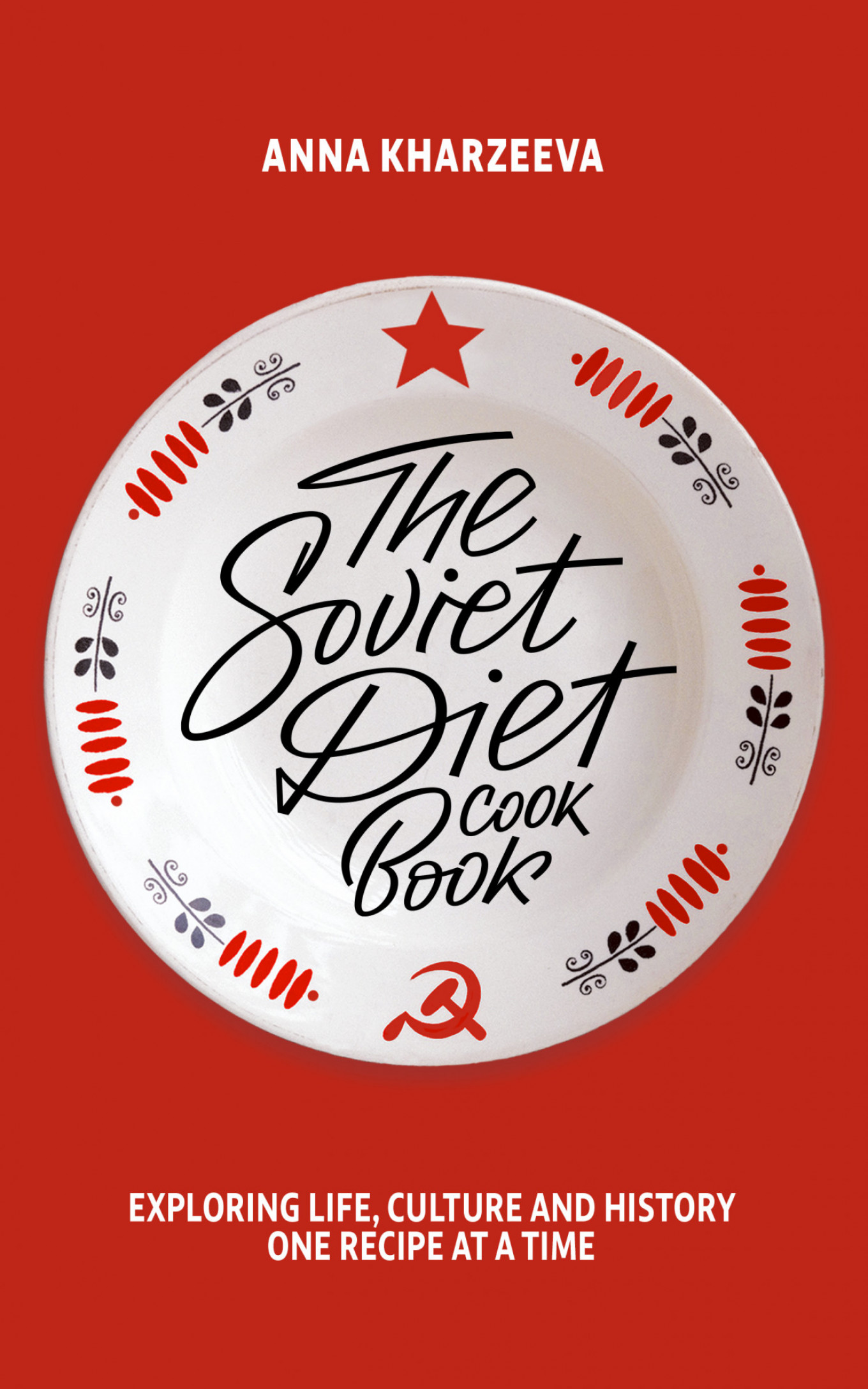
Granny’s friend Aina Vladimirovna, who spent part of her childhood in an orphanage because her father was killed when she was 6 and her mother was arrested, says kissel was very beloved by all the kids, and indeed if any of the orphans did anything wrong, they wouldn't get a glass at lunchtime.
Granny says she doesn’t know anyone else who hates kissel as much as my brother and I do. I wonder if it's because we grew up with too much choice, or if we would have hated it even if we had grown up in an orphanage.
In any case, I am happy to go back to my kissel-free life! As for this recipe, all you need to do to make it good is leave the starch out and you will get delicious cranberry mors.
Ingredients:
- 1 cup cranberries
- ¾ cup sugar
- 2 Tbsp starch
Instructions:
- Wash the berries with hot water then crush with a pestle or a spoon. Add ½ cup boiling water, rub through a sieve and squeeze through a cheesecloth. Set the juice aside.
- Put the berry remnants in a pan and add 2 cups of water. Put on the stove and boil for 5 minutes. Then strain and keep the juice. Add sugar to the juice and boil again on the stove until the sugar dissolves.
- Add starch and boil, stirring, until starch dissolves and mass has thickened. Add the reserved juice to the thickened mixture and stir well.
Reprinted with permission from ““The Soviet Diet Cookbook: Exploring Life, Culture and History — One Recipe at a Time” by Anna Kharzeeva. Idea and editing by Lara McCoy. Originally published on www.rbth.com 2014-2016. Copyright © granted to Anna Kharzeeva from Rossiyskaya Gazeta in 2016. Photographs by Anna Kharzeeva.
A Message from The Moscow Times:
Dear readers,
We are facing unprecedented challenges. Russia's Prosecutor General's Office has designated The Moscow Times as an "undesirable" organization, criminalizing our work and putting our staff at risk of prosecution. This follows our earlier unjust labeling as a "foreign agent."
These actions are direct attempts to silence independent journalism in Russia. The authorities claim our work "discredits the decisions of the Russian leadership." We see things differently: we strive to provide accurate, unbiased reporting on Russia.
We, the journalists of The Moscow Times, refuse to be silenced. But to continue our work, we need your help.
Your support, no matter how small, makes a world of difference. If you can, please support us monthly starting from just $2. It's quick to set up, and every contribution makes a significant impact.
By supporting The Moscow Times, you're defending open, independent journalism in the face of repression. Thank you for standing with us.
Remind me later.



